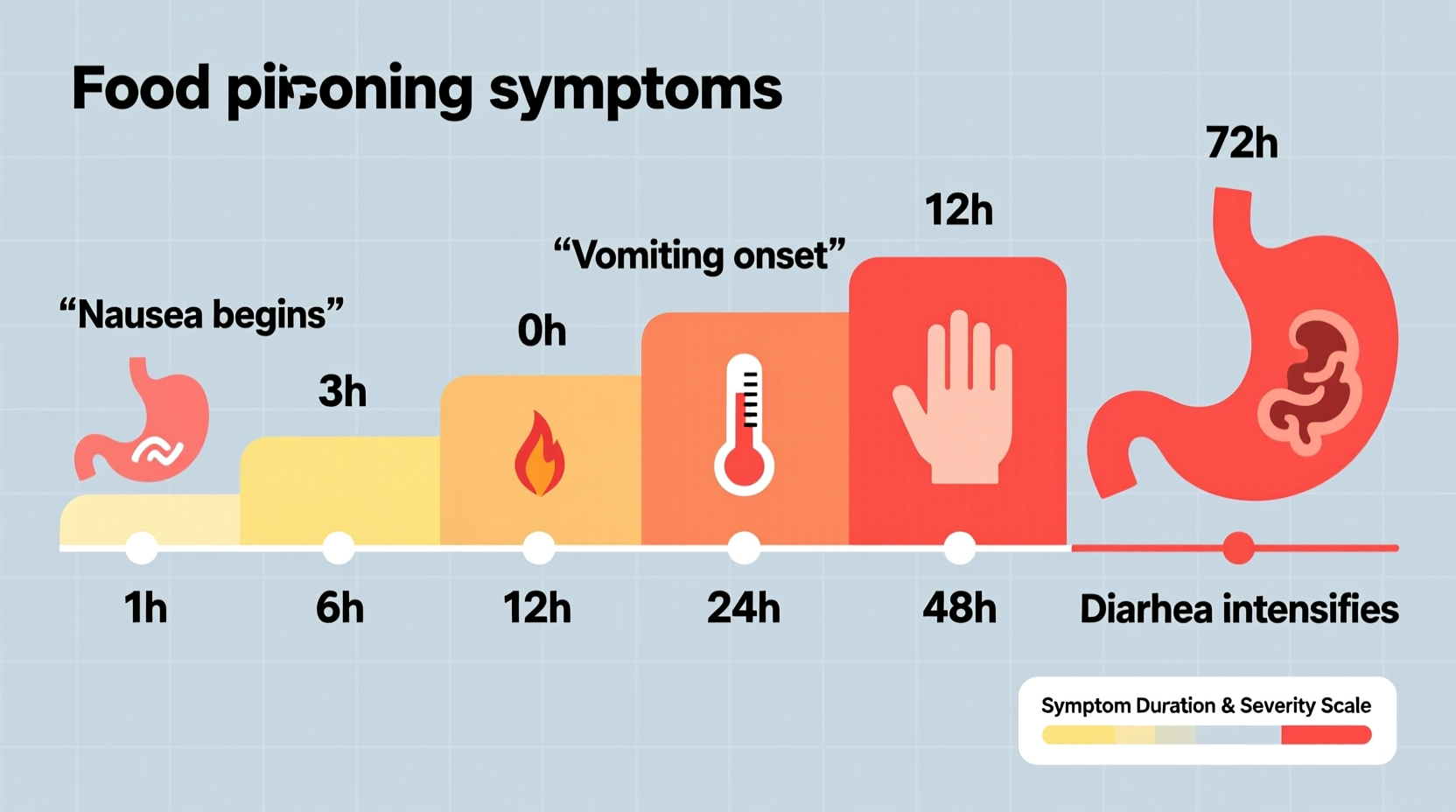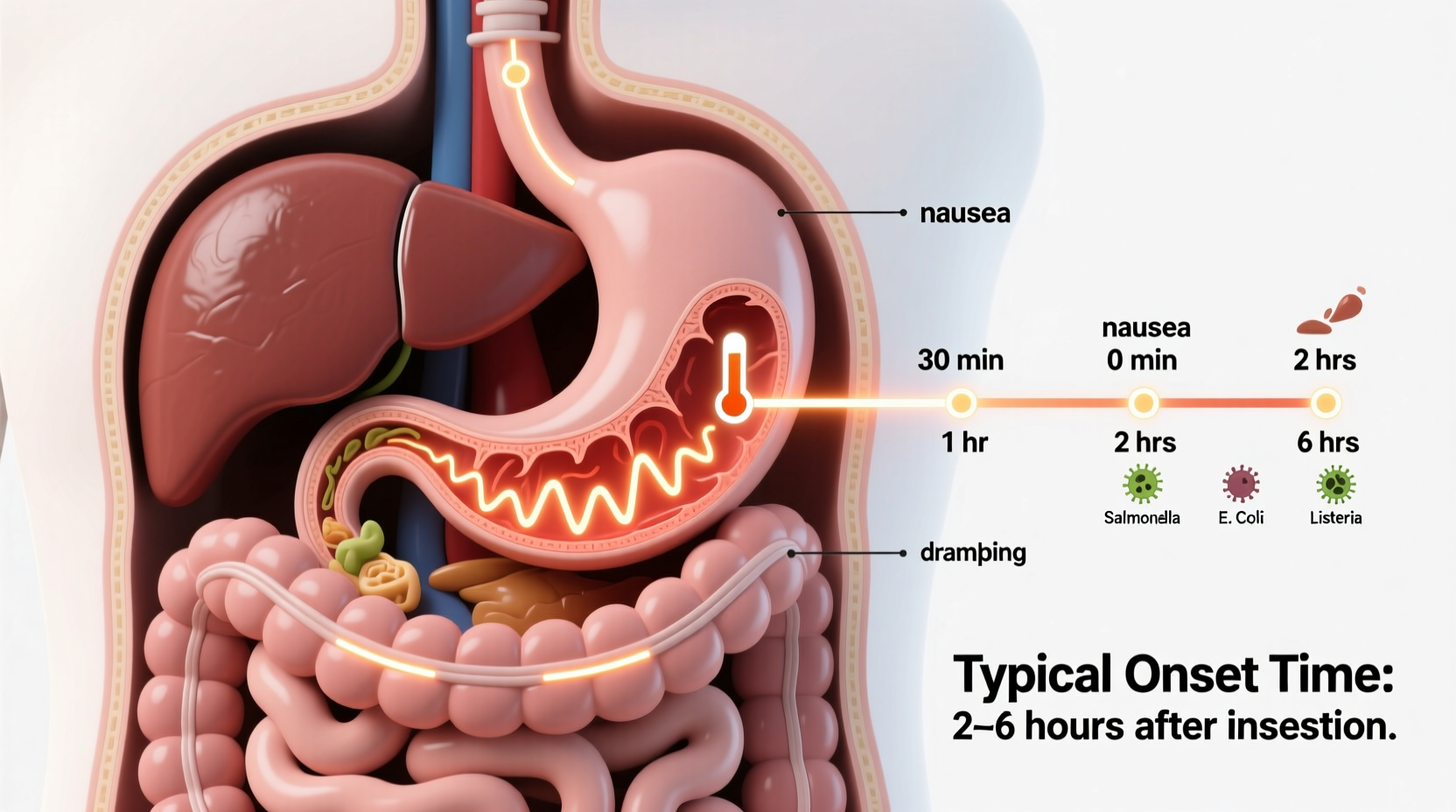Understanding Food Poisoning Onset Timelines
When you're worried about potential food poisoning, knowing exactly how long it takes for food poisoning to hit can help you determine whether your symptoms are related to contaminated food and when to seek medical attention. The incubation period—the time between consuming contaminated food and symptom onset—varies based on several critical factors.
Why Food Poisoning Onset Times Vary
Unlike many illnesses with predictable timelines, foodborne illnesses follow different patterns depending on the specific contaminant. The pathogen's biological characteristics determine how quickly it can multiply to levels that cause illness. Some bacteria produce immediate toxins, while others need time to establish infection in your digestive system.
| Pathogen Type | Typical Onset Time | Common Sources |
|---|---|---|
| Staphylococcus aureus | 30 minutes - 8 hours | Deli meats, salads, pastries |
| Bacillus cereus (vomiting type) | 1-6 hours | Fried rice, pasta dishes |
| Norovirus | 12-48 hours | Raw shellfish, contaminated water |
| Salmonella | 6-72 hours (avg 12-36) | Raw eggs, poultry, unpasteurized milk |
| E. coli O157:H7 | 1-10 days (avg 3-4) | Undercooked ground beef, leafy greens |
| Listeria | 1-4 weeks | Soft cheeses, deli meats, smoked seafood |
This food poisoning incubation period chart shows why you can't rely on a single timeline. According to the Centers for Disease Control and Prevention (CDC), understanding these variations helps medical professionals identify potential sources during outbreak investigations [CDC Food Safety Symptoms].

Factors That Influence Onset Time
Several variables affect how soon after contaminated food you get sick:
Pathogen Characteristics
Some pathogens like Staphylococcus aureus produce pre-formed toxins that cause almost immediate symptoms. Others like Listeria monocytogenes need time to multiply and invade your system before symptoms appear. The FDA Food Code explains that bacterial growth rates depend on temperature, pH, and available nutrients [FDA Food Code 2022].
Individual Health Factors
Your immune status significantly impacts symptom onset. People with compromised immune systems, pregnant women, young children, and older adults often experience symptoms sooner and more severely. Research published in Clinical Infectious Diseases shows that gastric acidity levels can delay or accelerate pathogen establishment in your digestive tract.
Amount Consumed
The dose makes the poison. Consuming a larger quantity of contaminated food typically leads to faster symptom onset. This explains why how long after eating bad food do symptoms appear differs between people who shared the same meal—those who ate larger portions often get sick first.
Symptom Progression Timeline
Once symptoms begin, they typically follow this progression pattern:
- Initial symptoms (first 6-12 hours): Nausea, stomach cramps, and mild diarrhea
- Peak symptoms (12-48 hours): Frequent vomiting, watery diarrhea, possible fever
- Recovery phase (2-5 days): Gradual improvement as body eliminates pathogens
Most cases resolve within 48-72 hours without medical intervention. However, certain pathogens like E. coli O157:H7 can cause complications even after initial symptoms improve.
When to Seek Medical Attention Immediately
Don't wait to see if symptoms worsen if you experience any of these warning signs:
- Signs of dehydration (dry mouth, reduced urination, dizziness)
- Blood in vomit or stool
- Diarrhea lasting more than 3 days
- Fever above 102°F (38.9°C)
- Neurological symptoms like blurred vision or muscle weakness
The Mayo Clinic emphasizes that certain high-risk populations should contact healthcare providers at the first sign of food poisoning symptoms [Mayo Clinic Food Poisoning Guide].
Immediate Actions When Symptoms Begin
If you suspect food poisoning, take these steps:
- Stay hydrated: Sip small amounts of clear fluids or oral rehydration solutions
- Rest: Avoid solid foods until vomiting subsides
- Monitor symptoms: Keep track of frequency and severity
- Preserve evidence: Save any remaining suspect food for potential testing
- Report: Contact your local health department if multiple people are affected
Preventing Future Episodes
Understanding food poisoning onset time by bacteria type helps you identify high-risk situations. Follow these evidence-based prevention strategies:
- Cook poultry to 165°F (73.9°C), ground meats to 160°F (71.1°C)
- Refrigerate leftovers within 2 hours (1 hour if temperature exceeds 90°F/32.2°C)
- Wash hands thoroughly before handling food
- Separate raw meats from ready-to-eat foods
- Discard food left in the "danger zone" (40°F-140°F / 4.4°C-60°C) for more than 2 hours
Remember that some pathogens like norovirus can survive refrigerator temperatures, making proper hand hygiene crucial even with refrigerated foods.
When Food Poisoning Isn't What You Think
Not all stomach upset is food poisoning. Conditions like gastroenteritis, stress-induced digestive issues, or medication side effects can mimic foodborne illness. If your symptoms don't align with typical timeframe for food poisoning symptoms or lack clear food exposure, consult a healthcare provider for proper diagnosis.











 浙公网安备
33010002000092号
浙公网安备
33010002000092号 浙B2-20120091-4
浙B2-20120091-4